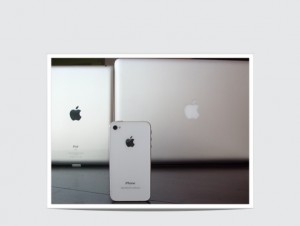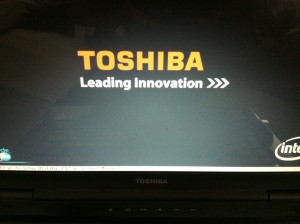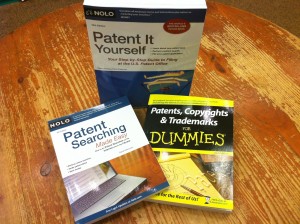Many innovative thinkers believe that his or her new ideas belong to them simply because they thought of it first. Not according to the America Invents Act. Creative inventions are continually evolving.

Apple IPad 2, Apple iPhone 4S, and Mac Book. All ongoing innovations of the 21st century. (Photo by: Robin Hamilton/Full Sail University)
The Committee on the Judiciary’s web site mentions that this act was designed to “Encourage innovation, job creation and economic growth.” However in the eyes of many, it threatens to diminish the current Patent system. The Judiciary web site also mentions that the Leahy-Smith America Invents Act “Implements a first – inventor- to-file for patent approval, creates a post grant review system to weed out bad patents, and helps the Patent Trademark Office (PTO) address the backlog of patent applications.” President Barack Obama signed the bill into law on September 16, 2011.
In the world of social media and how web sites and their content are freely published, the creator must protect himself. A summary of the Leahy-Smith Invents act is clearly defined. If you publish material without a patent or copyright then someone else can steal it if he or she beats you to the patent office, however; with some exceptions.
In 1953 Robert Kearns invented a unique type of windshield wiper in the basement of his home. In 1963 Kearns introduced to the Ford Motor Company a windshield wiper that blinked or paused according to the manual manipulation of the operator. Ford allegedly, some years later, breached the patents of this inventor. Kearns who invented what is known as “blinking” wipers or “intermittent” wipers essentially sued Ford in 1978 and then the Chrysler Corporation in 1982. The auto industry’s argument according to the Kearns v. Ford Motor Company court documents, were that “invention is supposed to meet certain standards of originality and novelty.” Ford claimed that “The patent was invalid because Kearns’ intermittent windshield wiper system had no new components.” Kearns won both the cases.
Ford and Chrysler rejected Kearns’ initial proposal for the invention, but in 1969 they began to install the windshield wipers to their cars. These cases were of the best known cases of patent infringement, to date.
Stephen Olson, a Patent Attorney for Harness Dickey, a law firm in Troy Michigan said, “ The American Invents Act went into effect on March 16, 2013.” Olson reiterated that, “Once upon a time a person who was considered the first to invent got the credit. But now it is the one, who is the ‘first to file,’ who essentially gets the credit.” He goes on to say that. “In March of this year, I have had about 800 patent applications. Some will be granted and some will be denied based on inventions that occurred prior.”
There are a number of publications available to educate an inventor on how to patent and protect his or her material. The key is to know the law and to understand your rights as an innovative creator.

